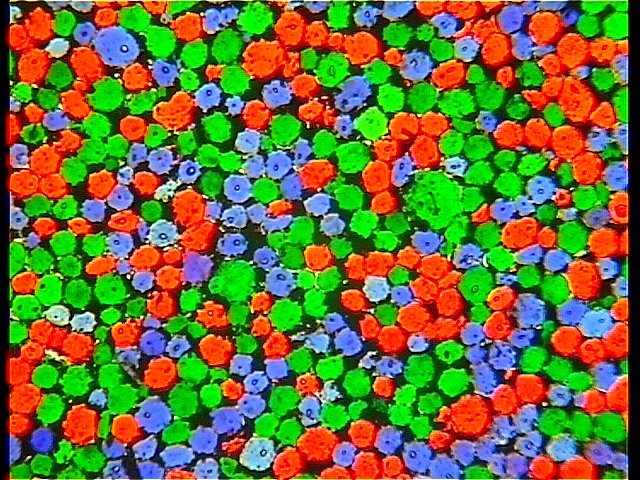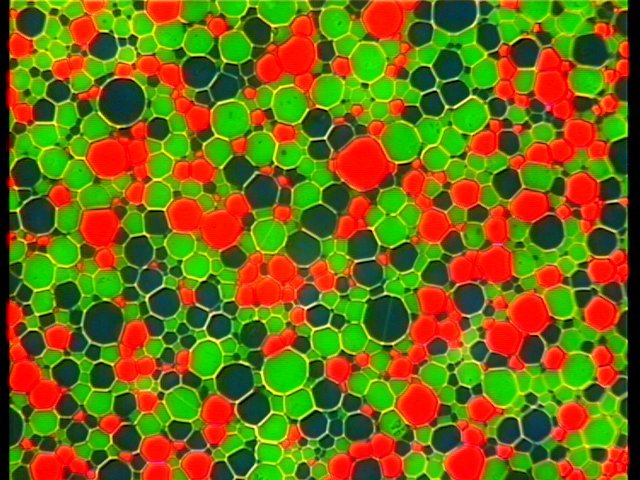In 1903 the brothers August and Louis Lumière invented a photographic process which was capable of showing color. In 1907 they started manufacturing dry plates at their facility in Lyons, France. Shortly thereafter a manufacturing facility was established in Burlington, Vermont, USA. The process which they sold was known as the Autochrome process.
The process worked as follows. Glass plates were coated with a mixture or dyed starch grains and lampblack. The starch grains had been dyed red, green, and blue and formed a filter screen on the glass plate. The function of the lampblack was to block light which would otherwise go through the spaces between the starch grains. This mixture was rolled onto the glass plate under pressure so that it only formed a layer one starch grain thick. Onto this "screen" was coated a panchromatic silver halide emulsion. The finished plate was exposed to light through the glass and screen. The emulsion was developed as a positive (reversal) and viewed through the color screen. The presence of silver grains blocked some or all of the light passing through that area of the plate. The combination of the three colors gave the sensation of a color image to the observer. As can be imagined there was considerable light loss in this process and the finished slide was rather dark but colorful nevertheless. Figure one is a photomicrograph of a Lumière plate with the silver layer removed.

Figure 1
Not too long after the Lumière plate came on the market the Agfa corporation introduced a similar process. Agfa used a mixture of dyed resin beads. These also were rolled onto the glass under pressure. The resin beads deformed under pressure and left virtually no space between them. Again this color screen was overcoated with a panchromatic silver halide emulsion. No lampblack was used and light transmission was slightly better than in the Lumière process. Figure two is a photomicrograph of an Agfa plate with the silver layer removed.

Figure 2
Both of these photomicrographs were taken with a modern microscope using a 1/8" Spencer microscope objective dating from about 1880. Magnification is about 200X.
All comments to the author
Dan
McNeil are welcomed